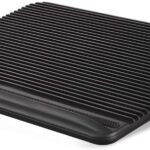When it comes to computer screens, one of the factors that many people are concerned about is sunlight.
People are constantly curious as to whether or not their monitors are affected by the sun.
However, monitors are frequently delicate when it comes to their built-in function.
Honestly, I’ve been using monitors in rooms with direct sunlight and areas with no direct sunlight since I was a child.
So now I’m here to clarify any doubts you may have about whether or not sun exposure affects your screens.
You might be happy that your old device may be safe from exposure.
However, sunlight may not be the only limiting factor affecting your screens, and there are many other factors to it.
For example, even old monitors and new monitors can be disrupted by sun exposure.
Let us discuss in detail how to cope with sunlight to increase the longevity of your tech so you can see if it’s truly affecting your equipment or not.
Table of Contents Show
Does Direct Sunlight Affect your Laptop/Computer Screen?
Depending upon functionality and built-in quality, the manufacturer’s Laptop/Computer screen may differ in how it reacts to sunlight.
Talking about different screens, the sun’s heat can cause physical harm to LCD screens.
Let’s look at different kinds of screens and the effect of direct sunlight exposure on them.
| Type of Screens | Is the Sunlight a factor or not? |
|---|---|
| 1. CRT Monitors | CRT monitors are not affected by sunlight. |
| 2. LCD Screens | Long exposure to sun damages LCD screens |
| 3. LED Screens | Prolonged exposure to sun has also found to damage LED screens |
| 4. OLED Screens | Some OLEDS are found to malfunction with sun exposure |
| 5. Plasma Monitors | Plasma Monitors degrades static images due to overexposure to sun |
| 6. Apple Retina Screen | Only gets overheat. Doesn't has other big impacts except overheating. |
Organic light-emitting diodes (OLED) and LEDs are some of the latest computer monitors.
Unfortunately, these monitors are also found to malfunction from direct exposure to sunlight.
Finally, most plasma screens manuals will tell you that exposure to direct sunlight for your set must be avoided regarding plasma screens.
Only the retina screen in MAC OS is safer from sunbeam from newer screens. It only gets overheat with no such damage.
When it comes to older screens such as CRT, their construction is extremely sturdy. As a result, they can resist light from the sun without harm.
Is Direct Sunlight Harmful to the Back of my Monitor?
One should always keep sunlight in their mind to protect monitors back.
Laying monitors open to heat for an extended period can often lead to a problem in their structure.
Exposure to the sun for an extended period can cause plastics to fade in color over time and cause brittleness.
If you put your Monitor exposed to the sun for a longer period, breakage is the most common result.
This results in the backside of your monitors disintegrating. Unfortunately, it also makes your Monitor’s back structurally weak.
Natural Sunlight Vs. Artificial Light: Which One is More Harmful to Computer Screens?
Regarding the artificial lights, normal lighting won’t affect the monitors.
If ordinary lighting affects monitors, it will also influence us who use the monitors.
Natural light, i.e., the light from the sun, produces heat and color that come from radiation.
Artificial lights are made up of different bulbs, filaments, and diodes. The heat in artificial light is adjusted as per requirement.

Almost all the light we use in our home doesn’t emit as much energy as the sun.
Furthermore, the sun’s heat is uncontrollable and changes on day to day basis.
As we previously stated, light exposure affects just a few cases on monitors under variable circumstances.
Another factor to consider is that every electronic device emits heat.
This heat from the sun increases the overall temperature of the body of your Monitor leading to leaking of IC or damage to the components.
So, in comparison with artificial light and sunlight, due to more energy production, radiation, heat sunlight is often more harmful to your monitors than your regular lights.
Ways to Protect the Monitor Screen from Direct Sunlight
There are different ways to protect your screen from direct sunlight. Keep the following measures in your mind:
1. Keep Monitors Away from the Sun
First and foremost, keeping your computer where the sun rays don’t fall is a simple approach to protect it.
Sunlight is essential for humans. Lack of exposure may create a monotonous environment.
As a result, you might use artificial lighting to boost your productivity.
This will cause you to avoid prolonged sun exposure without degrading your efficiency.
2. Using Sun-Protective Windows or Curtains
Another best technique to protect your screens from sunbeam is using windows with sun protection glass or curtains in your sun-facing rooms.
As a result, you can adjust the light ray to enter your room only when you need it, avoiding regular interaction with the rays.
For best sun protective curtains. Do check Sun protective curtains
3. Using Monitors with Specialized Screens
Popular anti-glare can be one of the best alternatives to protect sunbeams.
This anti-glare screen has the special feature of optical bonding.
Optical bonding means protecting your screens with extra protective glass.
This glass prevents your screens from direct contact with monitors.
Ways to Cool Down a Laptop from Overheating in Sunlight
It is not always possible to use your laptops only in air-conditioned rooms.
The most sensible way is to protect your device from the sun while working in the sun.
The following measure will guide you to prevent your laptop from overheating in sunlight.
1. Keep the Temperature Between 50 and 95 degrees Fahrenheit
Extreme temperatures are a concern for laptops. A temperature between 50 and 95 degrees is favorable for your device.
However, problems such as shutting down itself, damage of internal components, degradation in battery life are problems due to overheating.
Therefore, maintaining temperature is the optimal solution.
2. Using Additional Laptop Accessories
Currently, different accessories are popular to protect laptops from getting hot from the sun.
An anti-glare screen like we mentioned earlier is one of the solutions.
You might also want to consider using a dark cardboard box as a sun shield for your laptop’s screen.
Here are some accessories you may like;
| Cooling Pad | Specification | Image |
|---|---|---|
| Laptop Cooler with 6 Quiet Led Fans | 5.6-17 Inch Laptop Cooling Fan Stand with three big fans and three small fans and Ultra Slim USB connection |  |
| KEROLFFU Laptop Cooling Pad | 15.6, 14-13 inch with big, super quiet dual-Fans ((5.52in diameter)) and a built-in USB Line |  |
| Coolertek USB Powered Laptop Cooler | Cooling pad with dual 160mm quiet fans for a noise-free environment. USB 2.0 ports available |  |
3. Avoid Leaving Laptops in the Car
Leaving laptops in cars is one of the most common ways for your laptop’s quality to deteriorate.
In comparison to a typical room, your car grows hotter.
As a result, leaving your laptop in the car ruins its color, hard disk, and battery life.
4. Turn off the Laptop While Constantly Switching Hot and Cold Temperature
Like humans, our laptop has no adaptive features to deal with changing environments.
It’s always better to turn off your laptop when you visit outside your rooms or return your room from hot outdoors.
Another common problem that I face when using my screen in sunlight is vision difficulty.
Most of us are dealing with the same challenges. Let me explain why this is the case and how to avoid it.
Why is it Harder to See our Screens in Sunlight?
Sunlight is highly dominant comparing to your screen’s light. Sunlight shines more than our screens, causing the light to reflect.
Our screens made up of glass bounce the light straight off, causing problems in vision.
To avoid it, you can use a laptop hood, keep your laptop under a shade and increase its brightness.

You can find the laptop hood on amazon.
Key Takeaways
Lastly, after going through everything in this article, you will protect your laptop from the sunbeam.
Not only that, all the above prevention strategies will help you to promote your screen’s durability.
If you keep your device exposing to the sun for a longer period, there will be issues.
However, you can use an anti-glare screen and other accessories to protect your device from the sun.


